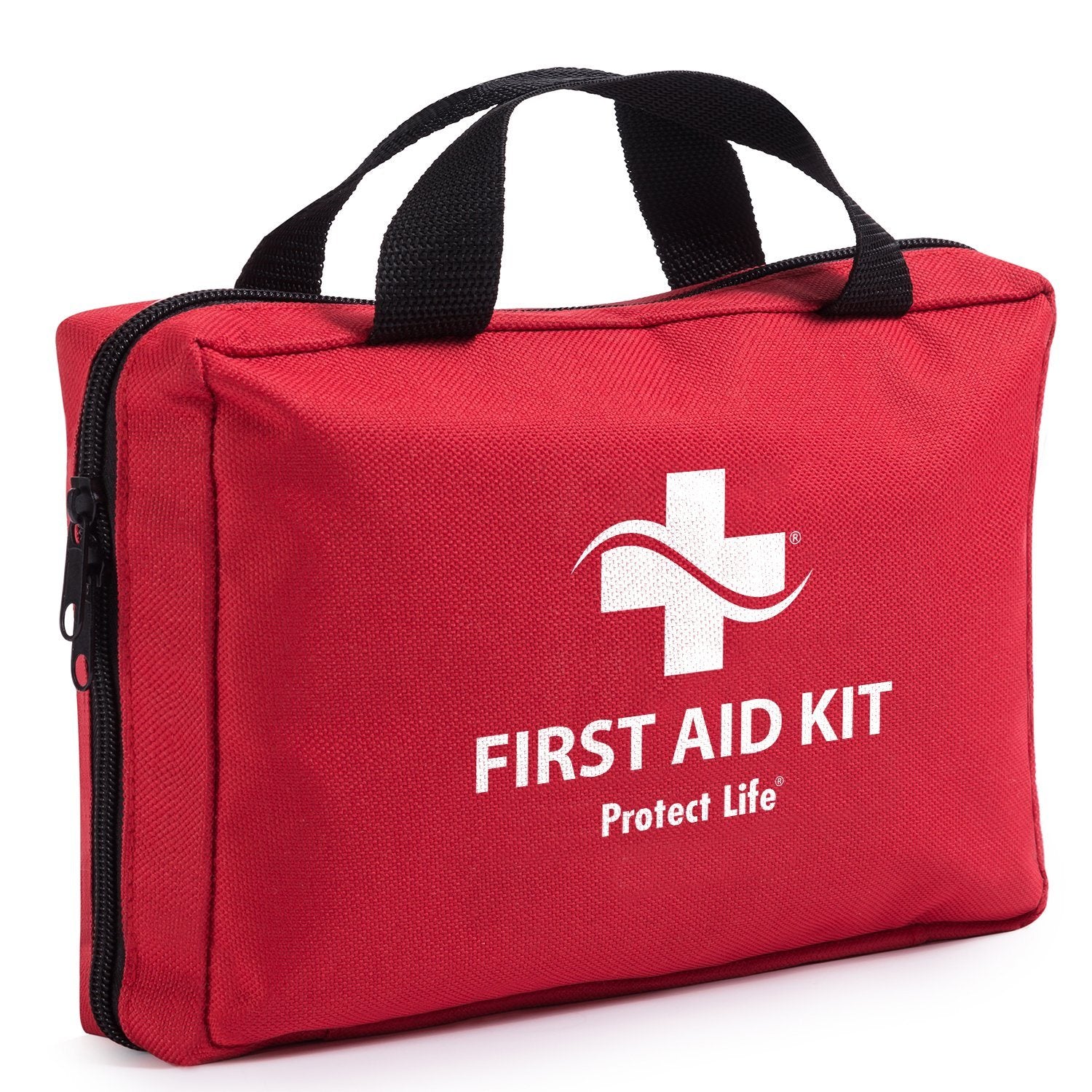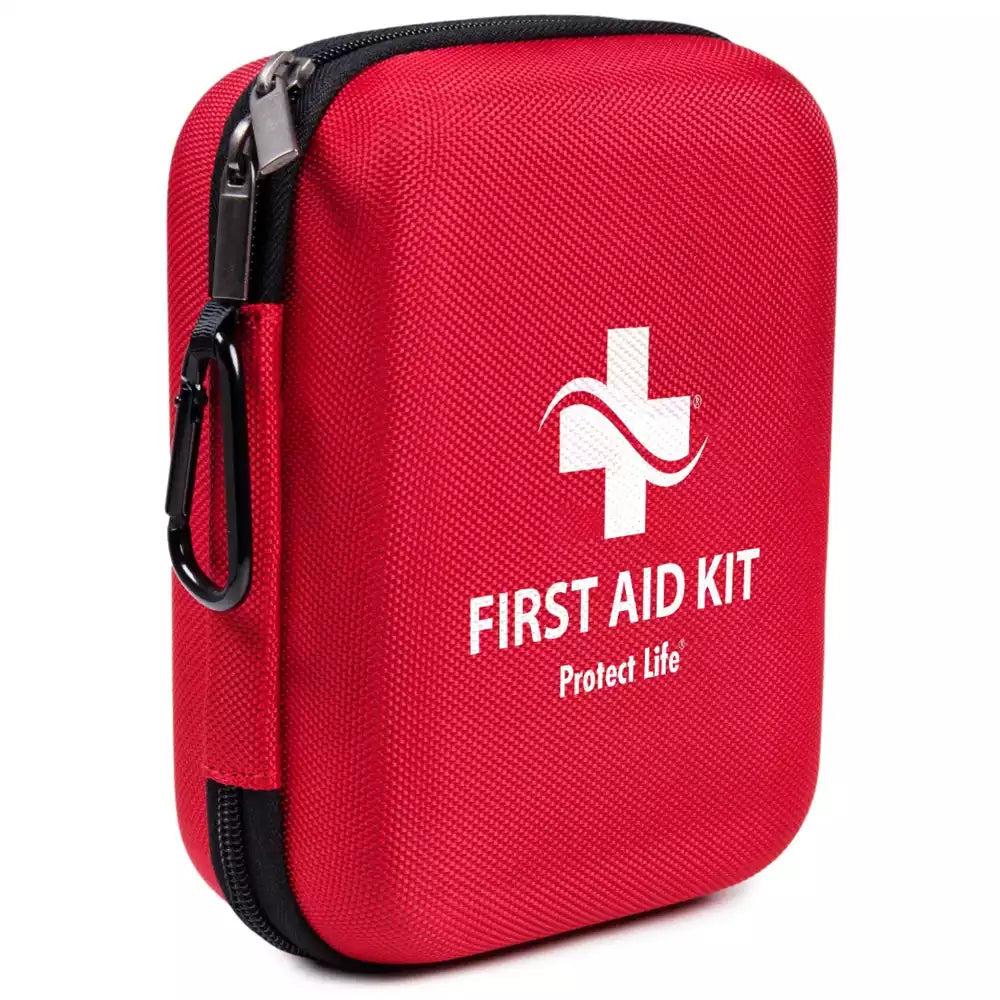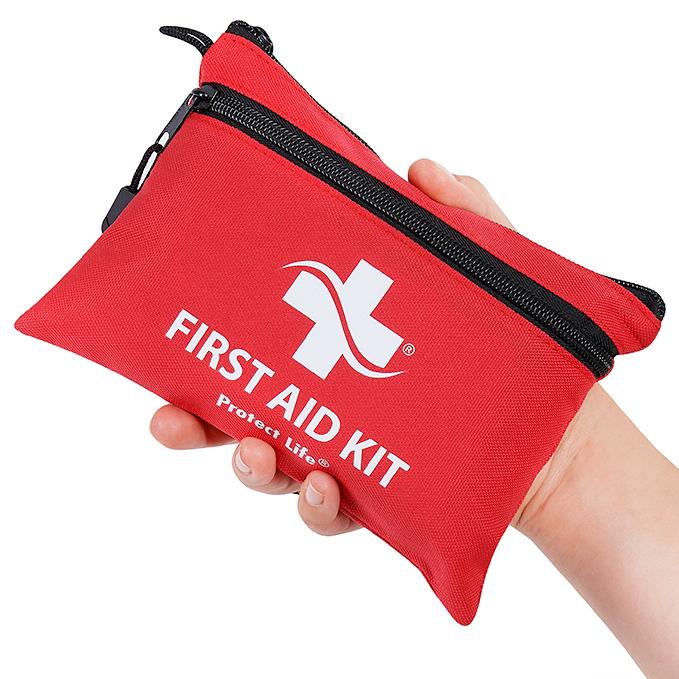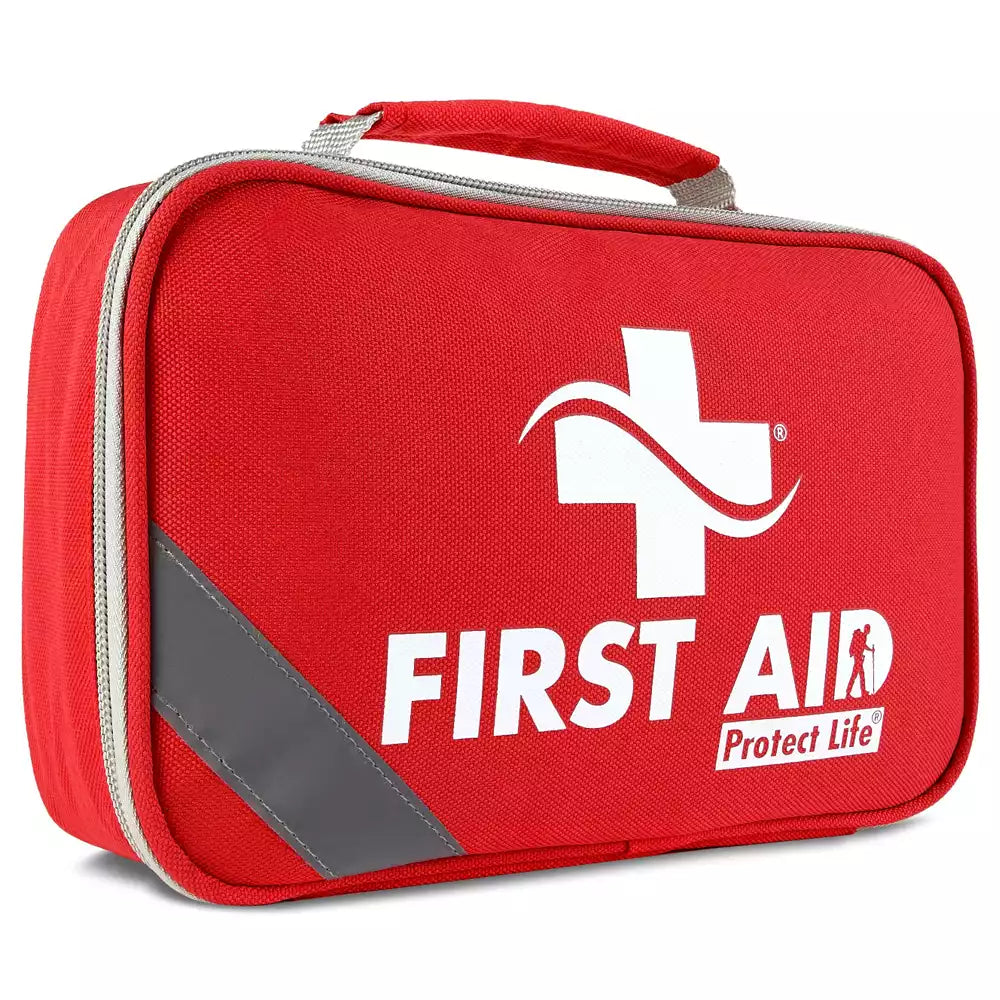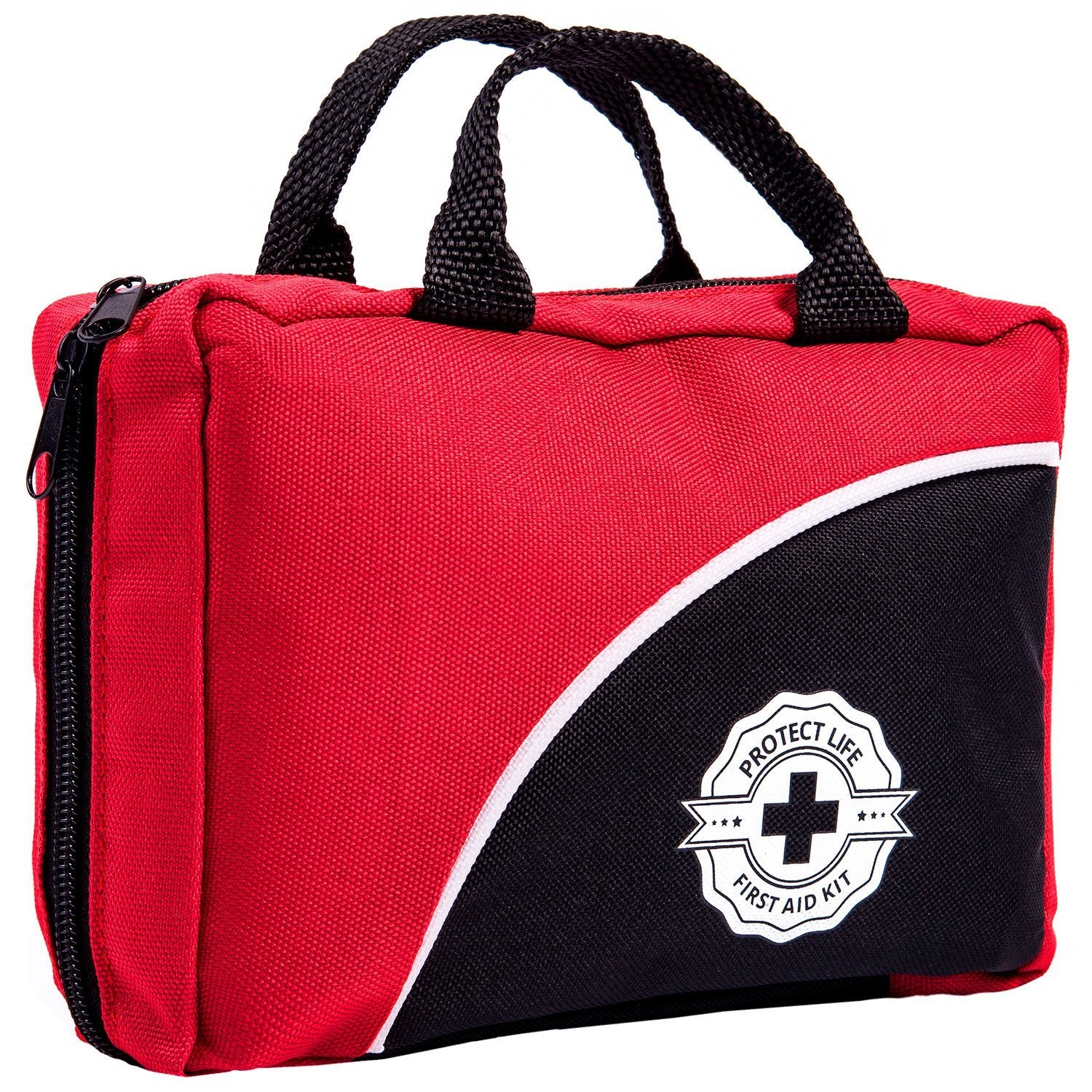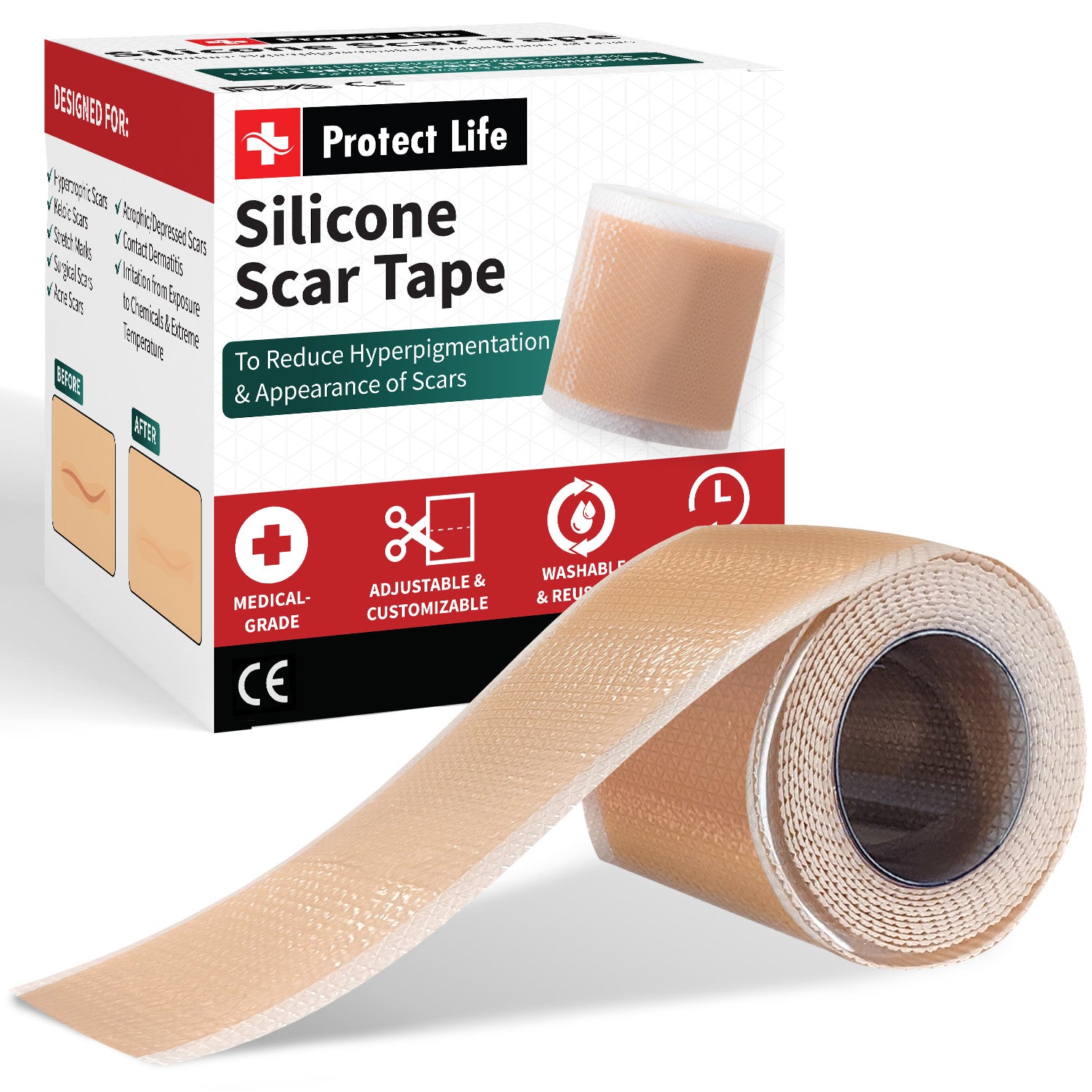If you cook, play, walk and spend time outdoors you know that minor cuts and scrapes are part of a normal life. Especially when you have children, be prepared to care for wounded fingers, elbows, hands, legs or knees.
Our first aid experts have gathered the best guidelines which will help you tackle small hazards like a professional. Be aware that you should get immediate medical attention if the wound is deep, it has something embedded in it or if it won’t stop bleeding. Our recommendation is to seek professional help also if the wound is located on a spot where scarring is a problem, like your face.
For minor cuts and scrapes, this is what you need to do:
Clean your hands. If it is possible, you should properly wash your hands with soap and water to eliminate the risk of contaminating the wound. But if you are outdoors hiking, camping or on a longer bike or car trip what can you do?
Open your Protect Life first aid kit and use either the antiseptic cleaning wipes to clean your hands or use the first aid disposable gloves. In this way, you protect the injured one and you protect yourself, as the gloves are the best in preventing cross-contamination.

Stop the bleeding. Minor cuts and scrapes usually stop bleeding on their own; however, if the cut is located on your head or hand, it may bleed more because those areas have more blood vessels.
You can apply gentle pressure on the wound with a clean bandage or cloth. Open your first aid kit and take any of the gauze pads which come in our emergency first aid kits in various sizes and apply gentle pressure to safely stopping excessive bleeding. If blood soaks through you can put another piece of gauze on top and keep applying pressure. Be careful not to remove the older one as you might separate the wound and the result is that you start bleeding again.

If possible, you should raise the affected part. You should immediately call your doctor if your cuts spurt blood or if it won’t stop bleeding after 5-10 minutes of pressure.
Clean the wound. The best way to clean a wound is by using lukewarm water and mild soap. Keeping a scrape or a cut under running water is the best way to reduce the risk of infection. The soap should not be used on the wound, but on the surrounding area.
If you are unable to use water, take from your Protect life first aid kit one of the povidone-iodine prep pads and gently rub the iodine into and around the cut or scrape. There is a lot of controversy in the medical community as to whether or not to use these pads directly on the skin wounds, but the World Health Organisation confirms that it is a good idea especially when you lank other means of cleaning the wound.

After cleaning the wound, remove any dirt or debris from the wound using the metal sterilized tweezers. Use another povidone-iodine prep pad to clean the tweezers. All our survival first aid kits are stocked with tweezers so you are ready to use it whenever and wherever you need it.
You should see a doctor if you can't remove all debris or if the wound was caused by something very dirty or rusty. In the latter case, a tetanus shot might be a good idea in case you haven’t got one in the past 5 years.
Cover the Cut or Scrape. If the injury is a minor scrape or scratch in an area protected from dirt that cannot be rubbed by your clothes you can decide to leave it uncovered. Our specialists recommend that for the majority of wounds it is a better idea to protect them to avoid the risk of infection or reopening the wound.
When you are in doubt, take your emergency first aid kit and use one of the adhesive bandages to keep out the bacteria. All our first aid kits are equipped with band-aids in various sizes, from small to large, for knuckles and fingertips. By using the adhesive bandages, you will protect your wound from dirt, bacteria, and friction caused by clothes and you will help the healing process.
The adhesive bandages are made to cover small cuts and scrapes and are more effective on wounds on your hands, fingers or knuckles as they can safely cover unusual angles.

If your cut or abrasion is on your elbow or knee you can use from our first aid kits the bandages for elbows and knees which ensure free movement and let the wound breathe.
For slices and cuts, it is recommended to use a butterfly bandage as it keeps the cut closed, but it is not designated to absorb blood or prevent wound infection. Our first aid specialists use the butterfly bandages to close off the cut and apply on it a sterile gauze secured with some first aid tape roll to hold it firmly onto the wound. It should be kept for 24 hours and then removed as in this way there is no risk of infection while the cut seals itself.
If any of the bandages become wet and dirty you should change it immediately. If the healing process takes place normally you can change it once per day.
See a doctor if you see any signs of infection on the skin or near the wound, such as swelling, redness, increasing pain, drainage, warmth or tenderness around it. Other signs of infection are body aches, chills, or fever.
Make sure your wound is healing and check it once per day and be careful with small children. Our specialist's recommendation is to go to a doctor for treating a wound for children under 1-year-old if the wound has jagged edges as it may need stitches, if the wound is on the face or in the genital area or if the wound was caused by human or animal bite.
The Protect Life first aid kits have all the tools you might need in case of an emergency. They are light and compact, yet still include hundreds of life-saving items. Get yours now!



